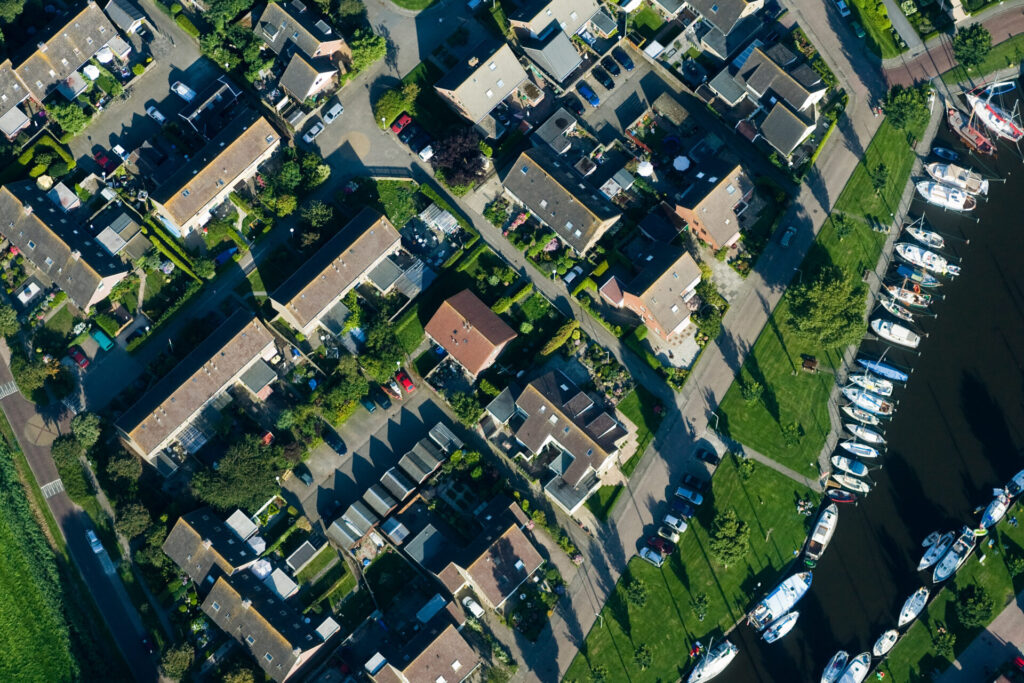Mortgages subjected to climate stress test
Dynamic Credit maps climate risk of its mortgage portfolio
- An analysis by asset manager and mortgage lender Dynamic Credit shows that over a quarter of Dutch homes are exposed to climate risks if the global temperature by 2050 already rises above two degrees.
- Extreme weather conditions pose the greatest danger, with an increased risk for about 12% of homes. In combination with insufficient drainage extreme weather can lead to local flooding.
- Other climate risks taken into account in the analysis are flooding due to rising sea levels or higher water levels in the Dutch river basins (about 7% of homes), the consequences of longer periods of drought such as wildfires (about 1%), soil subsidence (6%), and foundation damage (about 6%). Approximately 5% of Dutch homes are exposed to multiple climate risks.
Dynamic Credit, part of BNP Paribas Asset Management, has conducted an analysis of the impact of climate risks on Dutch homes if a global temperature rise of two degrees or more materializes by 2050. Based on the climate risks described in the Climate Effect Atlas, the study measures the impact for each home in portfolios managed by Dynamic Credit and benchmarks this to the Dutch housing market. The five climate risks being investigated are flooding, extreme weather, and the indirect consequences of drought such as wildfires, soil subsidence, and foundation damage.

The study shows that over 25% of homes in the Netherlands are exposed to one or more risks. With an exposure of almost 12%, the consequences of extreme weather pose the greatest risk. The consequences of extreme weather included in the analysis are a rapid rise in groundwater and flooding caused by insufficient drainage after heavy rainfall. The risk of flooding as a result of rising water levels in the Dutch river basins or sea level rise potentially impacts 7% of the homes in the portfolio. With less than 1% of Dutch houses exposed, wildfires pose to smallest risk in the analysis. Both soil subsidence and foundation damage because of drought are a considerable risk for about 6% of homes.
Although the analysis gives an idea of the number of homes exposed to climate risks, the costs and impact of different risks vary greatly. The number of homes potentially decreasing in value due to the consequences of soil subsidence is lower than those decreasing in value due to extreme weather, but the financial consequences can be significant if homeowners do not invest in strengthening the foundation in time.
BNP Paribas Asset Management Netherlands CEO Jan Lodewijk Roebroek: “In 2021, the European Central Bank
presented an action plan to integrate climate change into risk management. Pricing climate risk is not only an
important addition to risk models, it also makes the consequences of climate change tangible and contributes to
awareness among investors and consumers. On July 8, 2022, the ECB conducted a first climate stress test among
104 European banks. Dynamic Credit’s analysis responds to the ECB’s call for more research data and is an
important first exercise to investigate how climate risks can be valued on balance sheets.”
Tonko Gast, CEO of Dynamic Credit: “Our report is a first and is an important step in the way the financial sector
understands and manages climate risks. By combining advanced data analysis with our in-depth understanding
of the Dutch housing market, we provide institutional investors with insight into the extent to which their
mortgage portfolios are exposed to climate risks. This insight is not an end point, but rather the basis to start a
debate in the market about the housing market in the Netherlands in the future.”
The Climate Effect Atlas was developed on behalf of the Dutch Ministry of Infrastructure and Water Management in collaboration with various knowledge institutions and consultancy firms. The report uses future scenarios developed by the Royal Netherlands Meteorological Institute (KNMI). The future scenarios are published in the KNMI’14 report, which outlines four possible scenarios for the climate in 2050 based on global temperature rise
and changes in air circulation patterns. The scenario in which global warming is already two degrees warmer in 2050, compared to the average temperature between 1981 and 2010, is the most negative of the four scenarios.